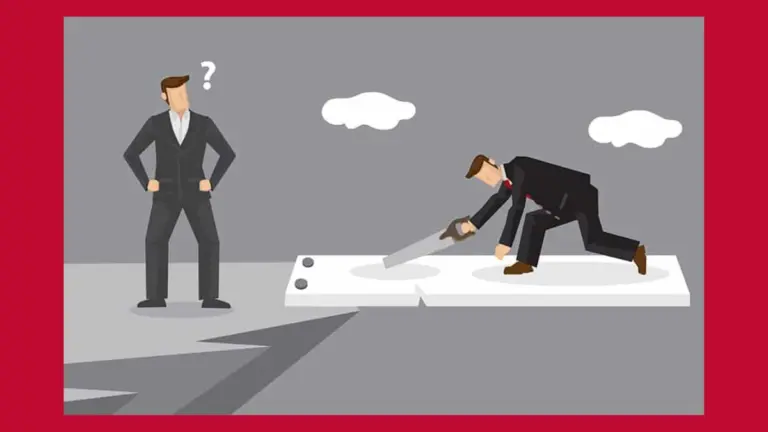Working less and producing more: is it possible? Yes, it sure is! In this article, you will discover how to boost your creativity, manage your time better, and achieve a healthy work-life balance. You’ll learn about setting clear goals, effective delegation, and overcoming procrastination. Plus, you’ll find smart ways to enhance your focus and enjoy more free time. Get ready to unlock the secret to doing less and achieving more!
Understanding the Concept of Working Less and Producing More
What Does Working Less Mean?
Working less means putting in fewer hours at your job or tasks while still getting the same or even better results. Imagine finishing your workday and still having time for family, friends, or hobbies. It’s about focusing on what truly matters and cutting out the noise. When you work less, you prioritize your time and energy on the tasks that have the most impact.
The Benefits of Working Less
Working less can lead to several positive outcomes. Here are a few key benefits:
- Improved Work-Life Balance: More time for yourself and your loved ones.
- Reduced Stress: Fewer hours can mean less pressure and anxiety.
- Increased Productivity: Working less can actually help you get more done.
| Benefit | Description |
|---|---|
| Improved Balance | More time for family and hobbies |
| Reduced Stress | Less pressure and anxiety |
| Increased Productivity | More focus leads to better results |
How Working Less Can Boost Your Creativity
When you work fewer hours, you give your mind a chance to breathe. This break can spark new ideas and fresh perspectives. Think of it like watering a plant; too much water can drown it, but just the right amount helps it flourish.
Many artists and writers find that stepping away from their work allows them to return with a clearer mind and new inspiration. Studies show that taking breaks can lead to better problem-solving skills and innovative thinking. By working less, you might just unlock your creative potential.
Time Management Tips for Increased Productivity
Setting Clear Goals
To boost your productivity, start by setting clear goals. This helps you know exactly what you want to achieve. Here’s how you can do it:
- Make Your Goals Specific: Instead of saying, “I want to get better at math,” say, “I want to score at least 85% on my next math test.”
- Break Them Down: Large goals can feel heavy. Break them into smaller, manageable tasks. For example, if your goal is to write a report, break it down into research, outlining, and writing.
- Set Deadlines: Give yourself a timeline. This keeps you on track. For instance, aim to finish your research by Friday so you can start writing over the weekend.
Using a Daily Schedule
A daily schedule is your best friend for productivity. It helps you see what needs to be done and when. Here’s how to create one:
- Start Each Day with a Plan: Take 10 minutes each morning to map out your day. Write down tasks you need to complete.
- Prioritize Tasks: Identify which tasks are most important. Use a method like the Eisenhower Matrix to decide what to focus on first.
| Task | Urgent | Important | Action |
|---|---|---|---|
| Finish report | Yes | Yes | Do it today |
| Reply to emails | Yes | No | Do it later |
| Read a book | No | Yes | Schedule time |
The Importance of Time Blocks
Time blocking is a powerful technique that can help you stay focused. This means setting aside specific chunks of time for different tasks. Here’s why it works:
- Reduces Distractions: When you know you have a set time to work on something, you’re less likely to get sidetracked.
- Gives You a Clear Focus: You can dive deep into a task without worrying about what’s next.
- Boosts Efficiency: By dedicating time to specific tasks, you can complete them faster and with better quality.
Try blocking out 25 minutes for focused work, followed by a 5-minute break. This is called the Pomodoro Technique. You’ll be surprised at how much you can get done!
Effective Delegation for Better Results
Why You Should Delegate Tasks
Delegating tasks is like passing the baton in a relay race. It helps you save time and boost productivity. When you delegate, you allow others to take on responsibilities, freeing you up to focus on what truly matters. This not only helps you manage your workload but also empowers your team. When team members take ownership of tasks, they often feel more engaged and motivated.
How to Choose the Right Tasks to Delegate
Not every task is suitable for delegation. Here’s how to pick the right ones:
| Task Type | Delegate? | Reason |
|---|---|---|
| Routine tasks | Yes | They are time-consuming but easy. |
| Important decisions | No | You need to be involved in these. |
| Creative projects | Yes | Others might bring fresh ideas. |
| Customer interactions | No | You want to maintain a personal touch. |
| Administrative work | Yes | Others can handle these efficiently. |
When deciding, think about which tasks take up too much of your time. If a task doesn’t require your specific skills, it’s a good candidate for delegation.
Tips for Successful Delegation
- Communicate Clearly: Make sure your team knows what you expect. Clear instructions can prevent misunderstandings.
- Trust Your Team: Once you delegate, step back. Trust your team to handle the tasks without hovering.
- Provide Resources: Ensure your team has the tools and information they need to succeed.
- Check-in Regularly: Stay in touch without micromanaging. This keeps everyone on track.
By following these tips, you can delegate effectively and watch your productivity soar.
Overcoming Procrastination to Work Smarter
Identifying Your Procrastination Triggers
To tackle procrastination, you first need to identify what triggers it. Think about when you tend to put things off. Is it when you feel overwhelmed? Or maybe when the task seems boring? Here are some common triggers:
- Fear of failure: You might avoid a task because you’re scared it won’t turn out well.
- Perfectionism: If you’re waiting for the “perfect” moment, you might never start.
- Distractions: Social media or TV can pull you away from your work.
- Lack of interest: Tasks that don’t excite you can be hard to start.
Recognizing these triggers is the first step in your journey to work smarter.
Techniques to Beat Procrastination
Once you know your triggers, it’s time to use some techniques to beat procrastination. Here are a few effective strategies:
- Set Clear Goals: Break your tasks into smaller, achievable goals. Instead of saying, “I’ll write a report,” say, “I’ll write the introduction today.”
- Create a Schedule: Design a daily or weekly schedule. Stick to it as if it’s a meeting you can’t miss.
- Limit Distractions: Find a quiet place to work. Turn off notifications on your phone or computer.
- Reward Yourself: Give yourself a treat after completing a task. It could be a snack, a break, or some time on social media.
- Stay Accountable: Share your goals with a friend or family member. They can help keep you on track.
The Power of the Two-Minute Rule
One of the most effective tools to combat procrastination is the Two-Minute Rule. This rule states that if a task takes two minutes or less, do it immediately. Here’s how it works:
| Task Type | Action |
|---|---|
| Answering emails | Do it right away |
| Making a phone call | Call now |
| Tidying your desk | Spend two minutes cleaning |
By applying this rule, you’ll find that small tasks don’t pile up. This keeps your mind clear and makes larger tasks feel less overwhelming.
Focus Enhancement Techniques for Better Output
Creating a Distraction-Free Environment
To boost your productivity, start by eliminating distractions. A cluttered space can cloud your mind. Here’s how to create a more focused environment:
- Declutter your workspace: Remove unnecessary items. Keep only what you need.
- Limit digital distractions: Turn off notifications on your phone and computer. Use apps to block distracting websites.
- Set boundaries: Let others know when you are working. Use a do not disturb sign if needed.
By making these changes, you can create a space that promotes focus and helps you concentrate on your tasks.
Using Focus Tools and Apps
In today’s digital age, there are many tools available to help you stay focused. Here are some popular options:
| Tool/App | Purpose |
|---|---|
| Focus@Will | Music designed for concentration |
| Forest | Gamifies staying off your phone |
| Todoist | Task management and organization |
These tools can be your allies in the quest for better focus. They help you manage tasks and keep distractions at bay.
The Pomodoro Technique Explained
The Pomodoro Technique is a time management method that can supercharge your productivity. Here’s how it works:
- Choose a task you want to work on.
- Set a timer for 25 minutes. This is one “Pomodoro.”
- Work on the task until the timer rings.
- Take a 5-minute break. Stretch, grab a snack, or take a short walk.
- After four Pomodoros, take a longer break of 15-30 minutes.
This technique helps you stay focused while giving your brain a chance to recharge. You’ll find that working in short bursts can lead to better output.
Work-Life Balance Strategies for Sustainable Productivity
Setting Boundaries Between Work and Home
To achieve sustainable productivity, it’s crucial to set clear boundaries between work and home. This means creating a physical and mental space that separates your professional life from your personal life. Here’s how you can do this:
- Designate a Workspace: Choose a specific area in your home for work. This helps signal to your brain that it’s time to focus when you’re in that space.
- Set Work Hours: Just like a traditional job, define your work hours. Stick to them as much as possible to avoid work spilling into your personal time.
- Communicate Your Boundaries: Let your friends and family know when you’re unavailable. This helps them respect your work time.
The Role of Breaks in Productivity
Breaks are not just a luxury; they are a necessity for keeping your productivity levels high. Taking short breaks can refresh your mind, helping you work more effectively. Here are some tips:
- Use the Pomodoro Technique: Work for 25 minutes, then take a 5-minute break. This simple method helps maintain your focus.
- Get Moving: Stand up, stretch, or take a quick walk. Physical movement can boost your energy and creativity.
- Stay Hydrated: Drink water during your breaks. Staying hydrated keeps your mind sharp.
How to Create a Balanced Routine
Creating a balanced routine is key to achieving that work-life harmony you’re aiming for. Here’s a simple table to help you structure your day:
| Time | Activity |
|---|---|
| 7:00 AM | Wake Up |
| 7:30 AM | Exercise |
| 8:00 AM | Breakfast |
| 9:00 AM – 12:00 PM | Work Session |
| 12:00 PM – 1:00 PM | Lunch Break |
| 1:00 PM – 4:00 PM | Work Session |
| 4:00 PM – 4:15 PM | Short Break |
| 4:15 PM – 5:30 PM | Wrap Up Work |
| 5:30 PM | Family Time / Relax |
By following this routine, you can maintain a healthy balance. Remember, it’s about working less and producing more: is it possible? Yes, it is! With the right strategies, you can achieve this balance.


